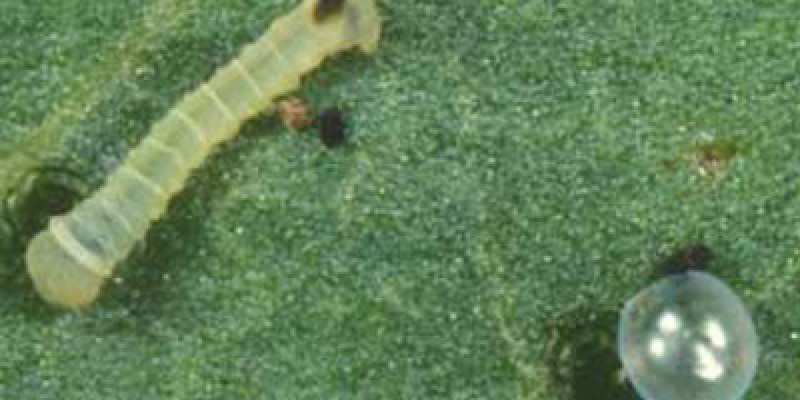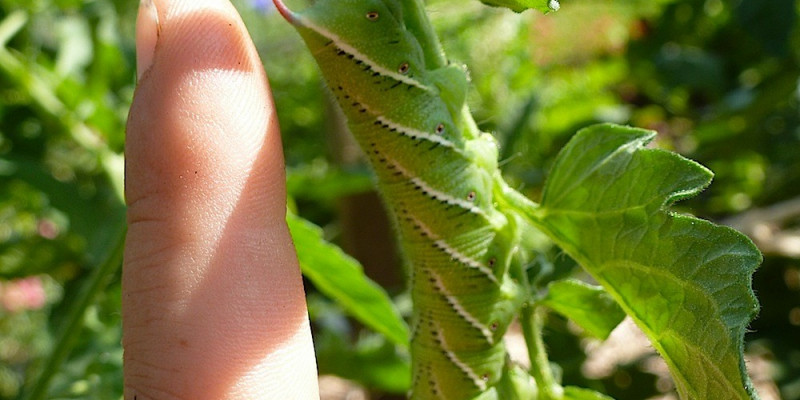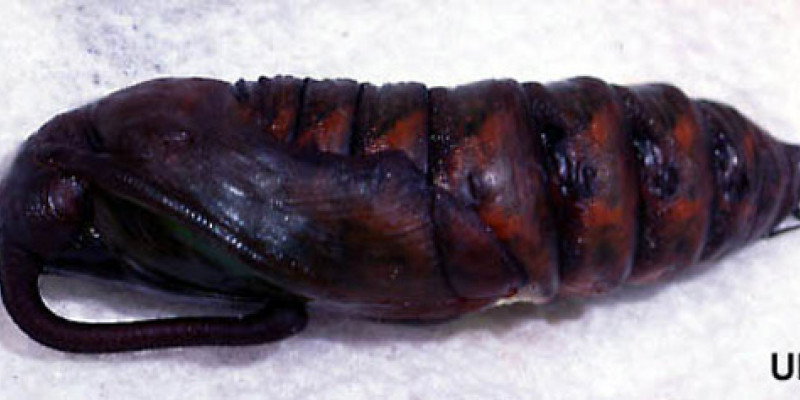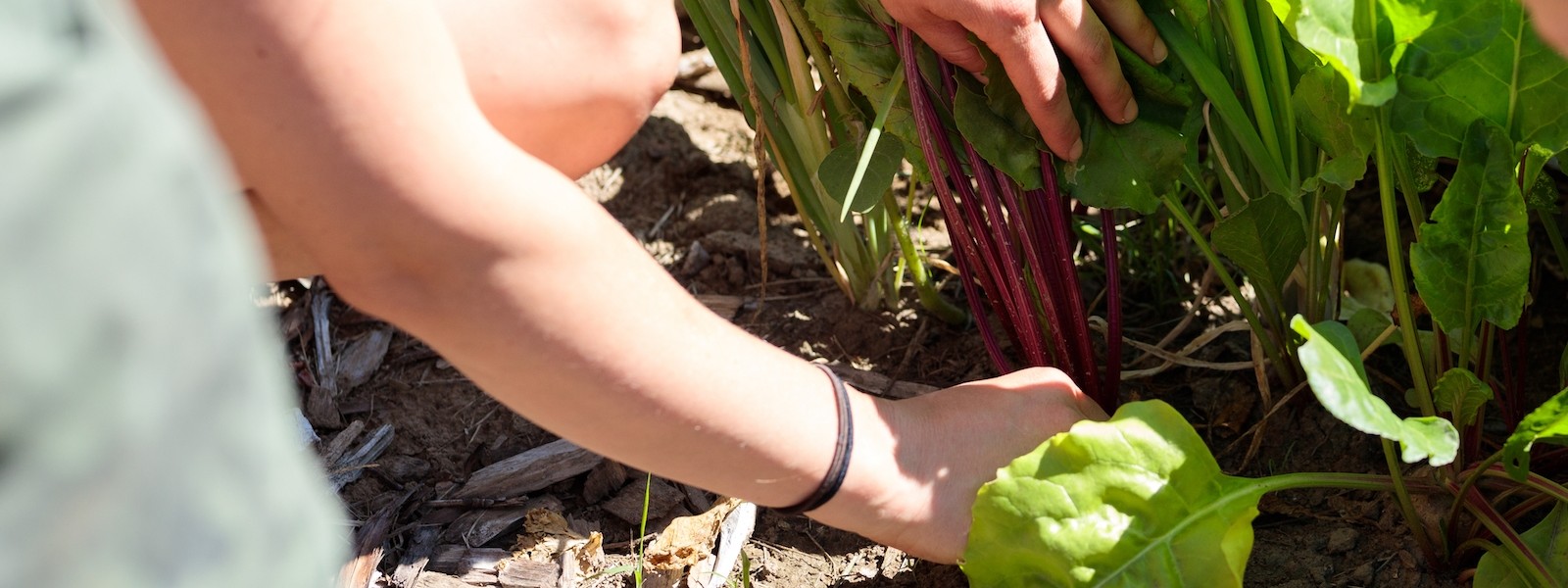Pest: Hornworm Caterpillar
Hornworm caterpillars are a pest. They can get huge while munching on your tomato plants. The best method for control in the home garden is hand picking. Understanding their lifecycle is a good place to start.
Hornworms can grow up to 6” long and as thick as your thumb, these smooth green caterpillars are the larvae of the hawk moth. The tomato hornworm has eight white diagonal ‘V’s and several small black spots on their sides. The rear of the worm has a black protruding “horn”. The tobacco hornworm, more commonly seen, look very similar but has white stripes and a red horn. Both devour tomato plants.


Life Cycle
In June and July, moths emerge from soil-borne pupae. Adults lay eggs on undersides of leaves. Each moth lives a few days and can lay up to 2000 eggs each, depositing about 5 eggs with each plant visit. Eggs hatch in a week and the larvae feed for a month and then pupate in the soil until the following summer. There can be up to two life cycles of the creature in our Vermont climate.


Plants They Attack
Members of the tomato family are their only hosts. These include: eggplants, peppers, tobacco, tomatillos, and tomatoes.
Spot the Damage
Several hornworm caterpillars can defoliate a whole young plant in a few days. Feeding usually occurs on the highest point of the plant first. You’ll notice entire leaves are gone with only the mid-rib remaining. They leave pellets of dark green excrement behind, also called frass. Search for the worms on the undersides of leaves and along stems where damage or excrement is present.
Preventative Actions
There is no organic prevention of these insects but several methods of control once they appear.
- Hand-pick the caterpillars off the plant and place into a container of soapy water.
- Attract native parasitic wasps.
- Avoid picking off hornworms that are carrying small, white sacks on their backs. These are the cocoons of a beneficial parasitic wasp. The wasp larvae kill the worm within days and, once mature, lay eggs on future hornworms.

Live Biological Controls
Use assassin bugs or parasitic wasps.
Organic Product Controls
Use BT (bacillus thuringiensis) or spinosad.
Sources
CCF staff
‘Good Bug Bad Bug’ Walliser, 2008
‘Organic Gardener’s Handbook,’ Ellis and Bradley, 1996
Interested in learning more? The Grower’s Library at Johnny’s Selected Seeds may have the information you’re looking for.

